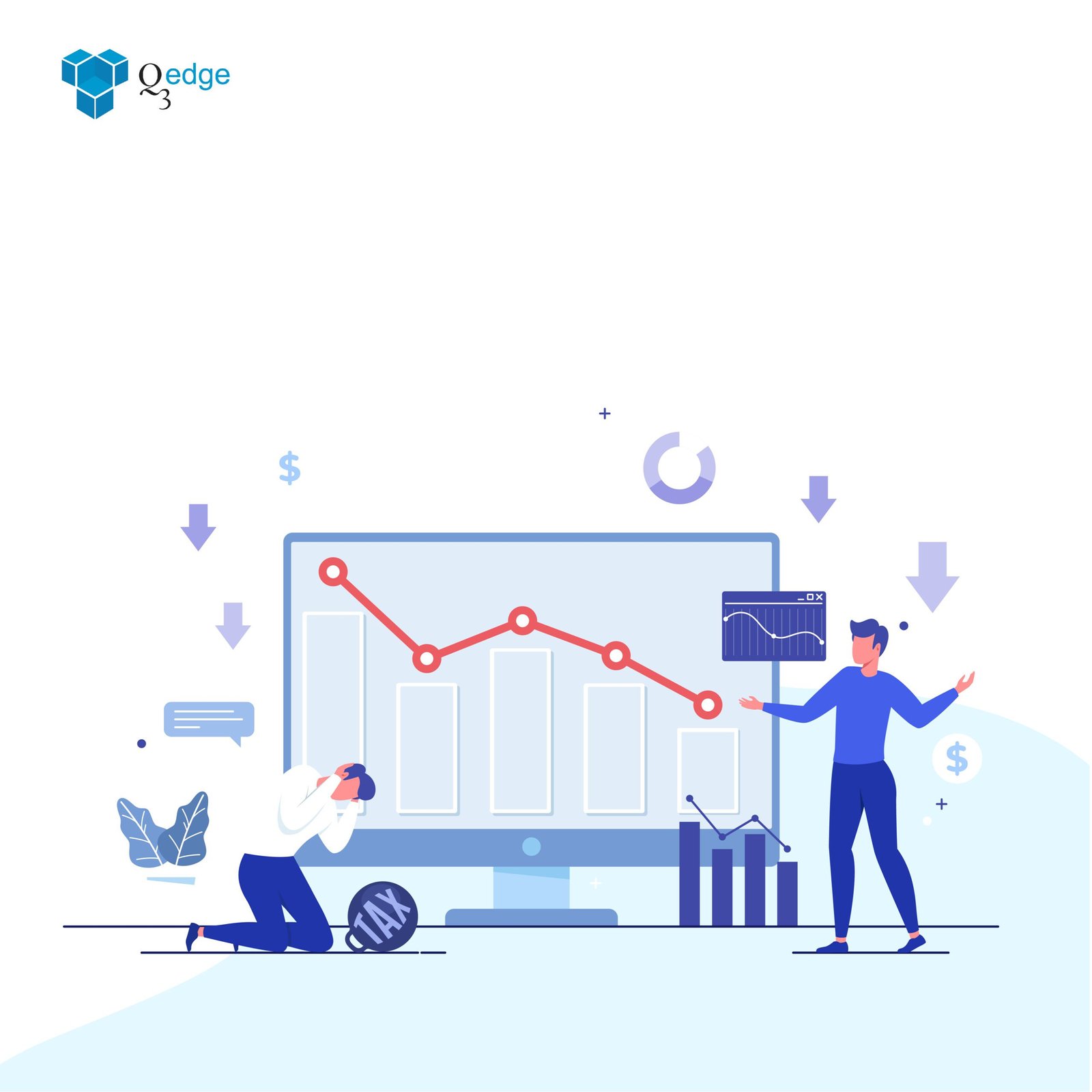What is the significance of digital security in the finance and insurance industry?

Safety and security is one of the critical aspects of the finance and insurance industry. Today, with the increase in technological advancements and the world ultimately going digital, data is seriously threatened. The finance sector primarily functions on confidential and sensitive data. Hence, digital security in the Finance is essential to every financial institution. The surge of cyber threats and criminals is increasing with each passing day. The only way to stop these is by adopting digital security to protect your finance firm and its sensitive data.
According to Cybersecurity Ventures, the price of cybercrimes worldwide by the end of 2022 will be approximately $7 trillion, which is enormous. Data breaches and hacks are significant unwanted expenses in financial institutions. The best way to curb these substantial financial burdens on finance firms is by adopting digital security measures that are innovative and tech-savvy.
Digital Security has a vast scope in the Finance World. In the coming years, almost all financial organizations have to embrace cybersecurity protocols or software to safeguard the data and information of their finance firm.

What is Digital Security in the finance and Finance?
Digital security refers to employing resources that can help protect an institution’s online identity, data, and other confidential assets. Many tools available today help provide digital protection in Insurance & Finance. These tools include web services, antivirus software, smartphone SIM cards, biometrics, and secure personal devices. Digital Security is a great tool to protect any financial organization’s online identity.
But is Cybersecurity similar to Digital Security? Well, the answer is No. Digital Security refers to protecting your online image, like your firm’s identity, assets, data, etc. However, Cybersecurity refers to securing online data, investments, etc., along with networks, computer systems, other digital components, and stored data from unauthorized access.
Types of Threats to digital security in Insurance and Finance
The highest number of digital or cyber threats happen in financial institutions. The sector caters to millions of customers and has sensitive data, which makes digital security in the Finance the most critical issue. There can be different types of digital security threats in the finance world. Some of them are:
Remote Work
With the onset of the pandemic, remote work has become the only choice for most industries, and the finance sector was no different. The employees of financial institutions made remote work arrangements at home or coffee shops. But post-pandemic, the necessity of remote work became the preference for employees in financial institutions.
Remote work in the finance and insurance sector comes with its share of threats to the firm’s Cybersecurity. The remote employees lack the office’s physical cybersecurity defenses, which may threaten the organization’s internal software and customer-sensitive data, making them accessible to malicious hands.
The best digital security solutions to safeguard the firm’s assets during remote work are by proactively educating employees about what to look for and how to stay safe in the remote work environment. It will help prevent data breaches and generate a more productive workforce.

Software Supply Chain Cyber Attacks
The most common malware distribution method is targeting a software vendor and utilizing their distribution channels to distribute malicious code to customers. It propagates along the supply chain via products or updates that look genuine but is fake. The supply chain cyber attacks compromise the distribution systems of the firm. They also enable attackers to enter the firm’s networks and house over the procedures for a long.
Digital security in insurance and Finance against supply chain attacks is by proactively detecting vulnerabilities and educating customers on how cyber attackers may gain access to their personal information through updates.
Putting the Sec in DevSecOps Phishing
Phishing attacks remain one of the biggest threats in the banking sector. It is the favorite tool of cyber criminals in today’s modern digital world. These cyber criminals use disguised emails or domains to trap individuals into downloading malware or giving away personal information, known as credential phishing.
Digital Security in the finance and insurance industry is at higher risk of phishing attacks, especially among employees and customers. Cybercriminals usually send emails disguised as official bank correspondence to customers, which can help them steal financial information effectively. The best way to combat this problem is by educating employees and customers to look out for phishing, especially when someone asks for login credentials.
Social Engineering
Phishing and social engineering go hand-in-hand but with different objectives. Also, social engineering can involve whaling attacks. Customers and employees are the finance and insurance industry’s most sensitive and vulnerable security links. Cybercriminals can easily trick these people into giving out sensitive details and credentials, which makes their job a cakewalk.
There are different types of cyber attacks using social engineering, like phishing, whaling attacks, sending bogus invoices deemed to be from a trusted source, etc. The best digital security solutions against social engineering are training your employees about social engineering tactics and how these threats continue to evolve.

Malware And Ransomware
Malware and ransomware attacks have been among the most dangerous financial and insurance threats over the last couple of years. With growing times and technology, these malware attacks have become more common and advanced with innovations.
Hence, most financial institutions today use modern cybersecurity defenses to fight against these advanced threats and mitigate security vulnerabilities. Some of the best digital security in the finance tools are- Behavioral analysis, Artificial Intelligence, Machine Learning, Cloud Computing, etc. These highly efficient tools are becoming the first line of defense against malware and ransomware threats. However, there must be continuous innovation and evolution in cybersecurity tools or methods to fight against the constantly evolving cyber threats and data breaches.
Cloud-based Cybersecurity Threat
As more software systems and data are stored and enabled in the cloud, it becomes easy for cyber criminals to access and leverage the data via cloud-based attacks. Financial institutions must ensure their cloud infrastructure is configured with the utmost security and safety to prevent cloud-based attacks and protect from harmful data breaches.
Customer Behaviors
It may seem weird when customer behavior is brought into this context. But, both customer and employee behavior can put data at risk. Sometimes, the consequences of poor security practices of digital banking customers compromise their banking information in seconds. Everything from reusing passwords to opening suspicious emails can quickly result in losing sensitive financial data.
There are a few digital security solutions that finance and insurance organizations can adopt to prevent data breaches due to customer errors. They are- providing well-designed mobile apps with a streamlined user experience and built-in security functions that can help mitigate the risk. Customers can use a fingerprint scanner on their phone or another multi-factor authentication method to access their finance account.

DevSecOps Pipeline Spoofing
Spoofing is a complex version of phishing. Most spoofing attacks utilize some form of impersonation. Domain spoofing involves creating a fraudulent version of an existing domain which can trick users into giving away login credentials and personal information. In this type of cyber attack, the criminals ensure the website looks legitimate to fool the customers.
Another form of spoofing involves fabricating a financial institution’s phone number to call or text customers. The bank’s correct caller ID will show up on the customer’s phone, making it difficult for customers to tell whether it is a genuine or fake message. Spoofing is a severe threat to digital security in Insurance and Finance. The only way forward is by becoming very alert, especially while using finance or insurance websites or replying to their phone calls.
Unencrypted data
Unencrypted data and unprotected mobile applications are a severe threat to financial institutions. When your data is unencrypted, it becomes a party for hackers to seize your data, and they can use it immediately, which can cause serious security problems for your organization. Hence, all your organization’s data must be encrypted. The best part about data encryption is that even if cyber attackers steal your data, it will take them forever to unencrypt the data to access them.
Transform your operations, achieve your goals
with our expert BPM consulting.
Fraud and Identity Theft
Fraud and identity theft is one of the most common cyber threats. These attacks are evolving with each passing day through several digital channels. Fraud and identity theft via cyber media and digital tactics are highly advanced and difficult to detect.
However, there are digital security solutions against these frauds and identity theft in the finance sector. Financial organizations must implement cybersecurity strategies that actively search for suspicious account activity to fight these attacks. It is one of the best ways to prevent digital fraud and identity theft.

Banking Security
Cyberattacks are becoming more common and sophisticated with each passing day. The cyber attackers look to mask themselves as third-party vendors or implement new spoofing techniques to steal data. Financial organizations must implement a platform that helps streamline digital security in the Finance & insurance.
With the increasing internet use, cyber-attack risk cannot be eliminated. However, with awareness and appropriate measures, finance employees and customers can prevent themselves from being victims of these attacks. Financial and insurance institutions should be at the forefront of cybersecurity innovations in this digital banking era.
Importance of Digital Security in Finance and Insurance
The above details about different types of cyber threats have established the importance of digital security in the Finance and insurance. Financial organizations and insurance companies deal with millions of transactions regularly. Hence, it is crucial to safeguard their data against cyber attacks; otherwise, you can face the following problems:
Loss to Customers
Suppose a financial institution has a cyber attack. In that case, it can lose its customer’s assets, which can be traumatic for the customer. However, there can be ways to retrieve money. Still, data loss is irreplaceable and dangerous as it can be used against them. Hence every organization must strive to protect customer data.
The firm's reputation is at stake.
When a finance or insurance firm is constantly under cyber attack, its customers will lose confidence in them and take their business elsewhere. Hence, finance and insurance firms must employ adequate digital security solutions to safeguard customers’ data and the firm’s reputation.
Digitization of Transaction
Most bank transactions today happen in the digital space across multiple digital platforms. These digital transactions have made banks more susceptible to hackers and malicious elements. Access to these digital platforms could be a disaster for the bank.
Impact of Data Breaches
Data Breaches can create havoc in the finance and insurance sectors. They can generate a loss in the organizations at a more personal level. Hence, adopting digital security in the finance and insurance firms is crucial. Here are some of the harmful impacts of data breaches in the finance and insurance world:
High Compensation Expenditure
Financial and Insurance organizations that suffer data breaches are subject to vast costs of containing the breach, identifying the information that has been stolen, and the people affected by the breach. Most of the time, these businesses are obligated to compensate affected customers. Many times finance firms may experience reduced share value and increased security costs.
Damage to Public or Private Shares
When data breaches happen, finance firms usually hesitate to notify customers, overhaul their security systems, and limit damage to their bottom line and consumer trust. Hence, the impact of data breaches extends to the company’s public or private shares. Most firms that suffer from data breaches have a drop in share prices either for a shorter time or for a long.
Damage to Reputation
The loss that customers and Finance firms experience due to data breaches hampers the firm’s reputation. The reputational damage that data breach causes is devastating for the firms. Some other consequences of a data breach include negative press, lost confidence, associated identity theft, and altered customer views towards the firm. All these can lead to long-term complications in the organization.

Civil or Criminal Lawsuits
Data breaches are responsible for civil and criminal lawsuits, which include class-action suits. These legal issues can lead to heavy settlements and fees, costing finance firms millions of dollars in payouts. Sometimes companies can face stricter lawsuits, including restriction of some business operations until the completion of legal investigation, which can directly hamper the financial business. Suppose criminal negligence is found out about your company. In that case, there are high chances you can face astronomical fees and sometimes jail.
Digital Security Solutions in Finance & Insurance
Here are some of the digital security solutions that can safeguard cyber threats in the finance and insurance sectors:
Cloud Security
Cloud computing is one of the best ways to secure your finance firm’s cloud infrastructure. Some organizations implement third-party security protocols for extra protection against targeted attacks. The best cloud security strategy includes cyber security solutions, controls, and services that protect an organization’s cloud infrastructure against cyber attacks.
Mobile Security
Mobile devices such as tablets, smartphones, etc., are dangerous gadgets as they can easily contain corporate data information that cybercriminals can access. Cybercriminals work by making users download malicious mobile applications online via phishing and other cyber attacks. It is ideal to adopt mobile security as they protect the firms against these attacks by securing these devices and their operating systems.
Application Security
Most financial institutions use secondary applications to serve their customers’ digital requirements. However, the lesser-known fact is that since these secondary applications are connected to the internet, they are vulnerable to cyber attacks, like broken authentication, misconfiguration, and cross-site scripting. Application security also prevents bot attacks and malicious interactions with applications and APIs.
Endpoint Protection
Endpoint protection involves securing the system from the user end of the employees. It is one of the best digital security solutions, using end-user device protection to access the organization’s network, like laptops, desktops, network systems, etc.
Network Protection
Networks are the most vulnerable site of cyber attacks. Hence, corporations ensure high-end network protection and enable safe web policies. A stable network protection strategy includes network analysis, threat hunting, Security Orchestration, and Automated Response (SOAR).
Compliance with Regulations for Digital Security in Insurance & Finance
Another best way to ensure digital security in insurance and Finance is by following regulatory compliance systems. Financial institutions must have a cybersecurity compliance plan to prevent cyber threats. The compliance plan can include- performing regular security updates, ensuring zero insecure connections, routine backups, and having intrusion detection software as a proactive approach against cyber criminals.
Some of the regulatory Compliances for financial data protection are- General Data Protection Regulation (GDPR), the Payment Card Industry Data Security Standard (PCI DSS), and Gramm-Leach-Bliley Act (GLBA). Some laws of financial regulatory compliance are- Sarbanes Oxley Act (SOX), Anti-Money Laundering Directives (AML), and MiFID II. Abiding by these laws and acts can help financial and insurance organizations prevent cyber attacks.

Conclusion
The need and importance of digital security in the Finance and insurance companies must be addressed. With the growing technology and innovations, the fraud community is upgrading itself, posing a severe threat to these organizations’ data and sensitive information. Hence, it is crucial to adopt digital security methods to prevent your company from drowning in the same pool.
With each passing day, the risk of cyber threats will increase. Hence, adopting high-end confinement, encryption, and digital security software is crucial. It is the only way to secure your company from never-ending penalties, fines, compensations, and lawsuits. It’s time to wake up to the alarm of digital security because it’s high time.
You may also like,
1. What Additional Benefits can BPM Certification Training Provide for the Development of Our Organization?
2. BPM Online Training for an Individual: Career Path, Job and Salary
3. Compliance Risk Management Using ARIS
4. Why choose ARIS tool over other Process Management Tools?
5. How to improve Overall Equipment Effectiveness (OEE)?
6. What is Overall Equipment Effectiveness OEE? How to Calculate it?
Take Action Now and Make a Difference
Feel Free To Contact Us for Further Information




